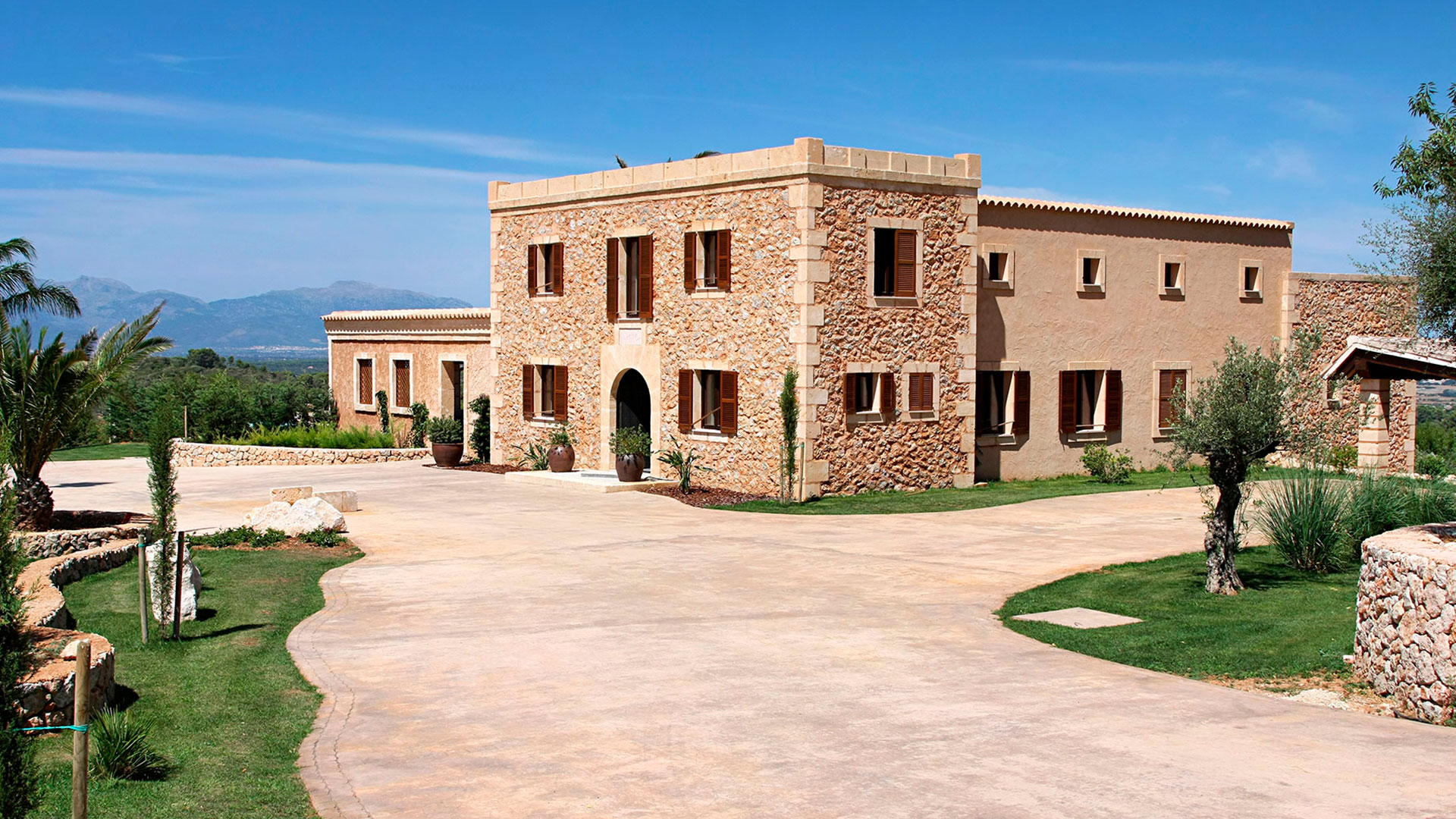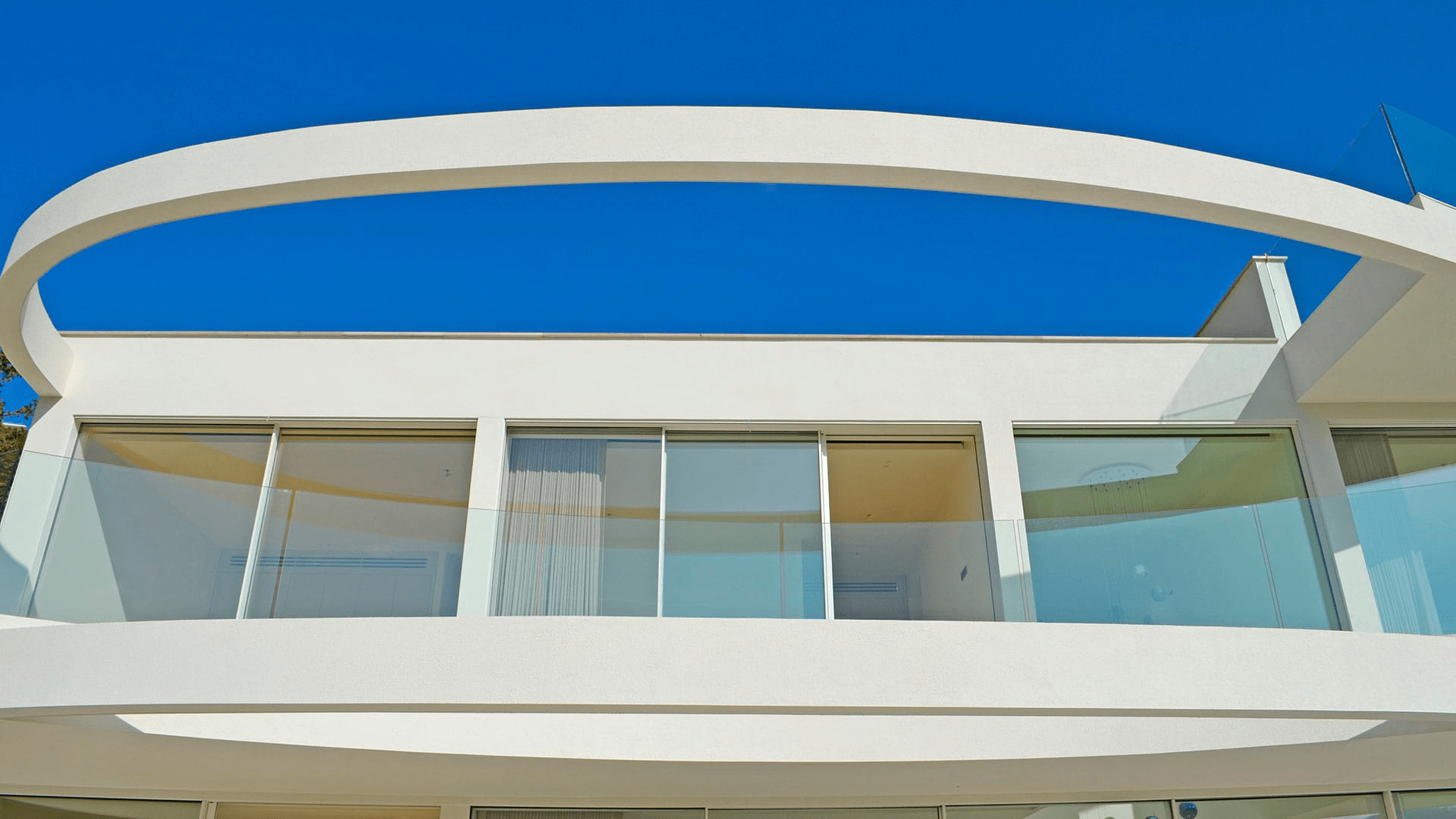

Traditional and modern architecture in Majorca
Majorca, the largest of the Balearic Islands in the western Mediterranean, is known for its breathtaking nature, rich culture and diversified architecture. In this article, we’ll take a look at Majorca’s traditional and modern architecture, exploring its historical roots and highlighting today’s trends and developments.
Evolution of architecture in Majorca over time
Majorca’s architecture has undergone a remarkable evolution over the centuries, shaped by the different cultures that have populated the island. From the Romans to the Moors and the Catalan conquerors, numerous cultures have left their mark on the architecture.
In the Middle Ages, Majorca experienced a building boom with the construction of the cathedral, monasteries and castles that still characterise the cityscape today. The Gothic cathedral La Seu in Palma de Majorca is an outstanding example of medieval architecture in Majorca. It was built in the 14th century and combines traditional Gothic architecture with modern restoration and extension projects led by architects such as Antoni Gaudí and Miquel Barceló. The cathedral is not only an architectural masterpiece, but also an important religious and cultural symbol for the island.
During the 20th century, Majorca’s architecture began to change. The extensive expansion of Son San Juan airport in the 1960s led to an unusually rapid increase in passenger traffic. Modern hotels, apartment complexes and tourist facilities were built to cope with the increasing influx of visitors. In recent decades, a trend towards a more sustainable and respectful approach to the environment has developed, which is also reflected in the architecture.
Traditional Majorcan architecture:
Majorca’s traditional architecture is strongly characterised by the island’s historical influences. Characteristic features of Majorcan architecture are the rustic stone walls, which are predominantly built from the local sandstone Marés and give the buildings a rustic character.
Other typical elements include monk and nun roof tiles, persianas (Majorcan shutters), narrow and tall windows, visible wooden cheeks, stone arches and the picturesque inner courtyards known as patios. The history of patios in Majorca goes back a long way and is closely linked to the historical development of the island. During Moorish rule in Majorca between the 10th and 13th centuries, many architectural elements of Arab culture were integrated into Majorcan architecture. The Arabs had a tradition of using patios to create cooler and sheltered areas within their homes. This tradition was continued in Majorca and influenced the design of homes and palaces.
Another notable feature of traditional Majorcan architecture are the ‘talaiots’, prehistoric stone structures that can still be found on the island today and are an important part of Majorca’s cultural heritage. These impressive stone towers were built by the early inhabitants of the island and serve as fascinating relics of a bygone era.
The characteristic rustic fincas scattered across the Majorca countryside symbolise the island’s traditional architecture. These country houses, often built of stone and surrounded by lush gardens, offer an idyllic picture of rural life. The thick-walled structures are designed to keep cool in summer and warm in winter.
Modern architecture in Majorca:
In recent decades, Majorca has seen a rise in modern architecture, characterised by a growing number of international architects and designers. Modern villas, hotels and public buildings are evidence of creative and innovative approaches that combine traditional elements with contemporary design.
Another example of modern architecture in Majorca are the luxurious designer villas that can be found predominantly along the island’s coastline. These villas are characterised by their innovative construction, spacious interior design and spectacular views. Large windows, open-plan designs and elegant terraces are characteristic of these contemporary villas, which epitomise the Mediterranean lifestyle.
Aspects and requirements of architecture on the island
Climatic conditions:
Majorca has a Mediterranean climate with hot, dry summers and mild, humid winters. Solar radiation is high all year round, which leads to intense heat in summer. Due to these climatic conditions, it is important that architecture in Majorca aims to ensure thermal comfort and energy efficiency.
Passive design:
Architects in Majorca often use passive design strategies to regulate the indoor climate in buildings without relying on mechanical cooling systems. These include the orientation of buildings and window placement for optimal sunlight and natural ventilation, the use of overhanging roofs and shutters for shade and maximising air circulation through the design of patios and verandas.
Construction and materials:
The choice of construction method and materials plays a crucial role in adapting to the climatic conditions in Majorca. Traditional materials such as stone and brick have proven their worth in absorbing heat and creating cooler interior spaces. Modern building materials such as thermal insulation materials, reflective coatings and airtight building envelopes are also used to reduce heat loss in winter and heat absorption in summer.
Consideration of water scarcity:
Majorca is prone to water shortages, especially during the summer months. Architects are taking this challenge into account by incorporating rainwater harvesting, grey water treatment and water efficiency methods into their building designs. This can include the installation of rainwater tanks to irrigate gardens, the use of water-efficient fixtures and the selection of drought-tolerant plants.
Utilisation of renewable energy:
Modern buildings in Majorca often integrate passive solar elements such as solar panels or solar water heaters to utilise renewable energy sources and further reduce energy consumption.
Future trends and developments:
Architecture in Majorca is in a constant state of change, with traditional and modern elements merging to create a unique and diverse building culture. Future trends could include an increased use of sustainable building materials and energy efficient technologies to further reduce the environmental footprint of buildings.
In addition, we could see an increase in architectural projects that honour the island’s heritage and history while taking into account contemporary needs and demands. The integration of traditional craftsmanship and local building techniques into modern construction projects could lead to a more harmonious and authentic architectural landscape in Majorca.
Overall, architecture in Majorca is a fascinating interplay of past, present and future that reflects the island’s rich cultural diversity. From the charming stone houses of the villages to the avant-garde buildings of the coastal resorts, Majorca offers architecture lovers an endless source of inspiration and discovery.

